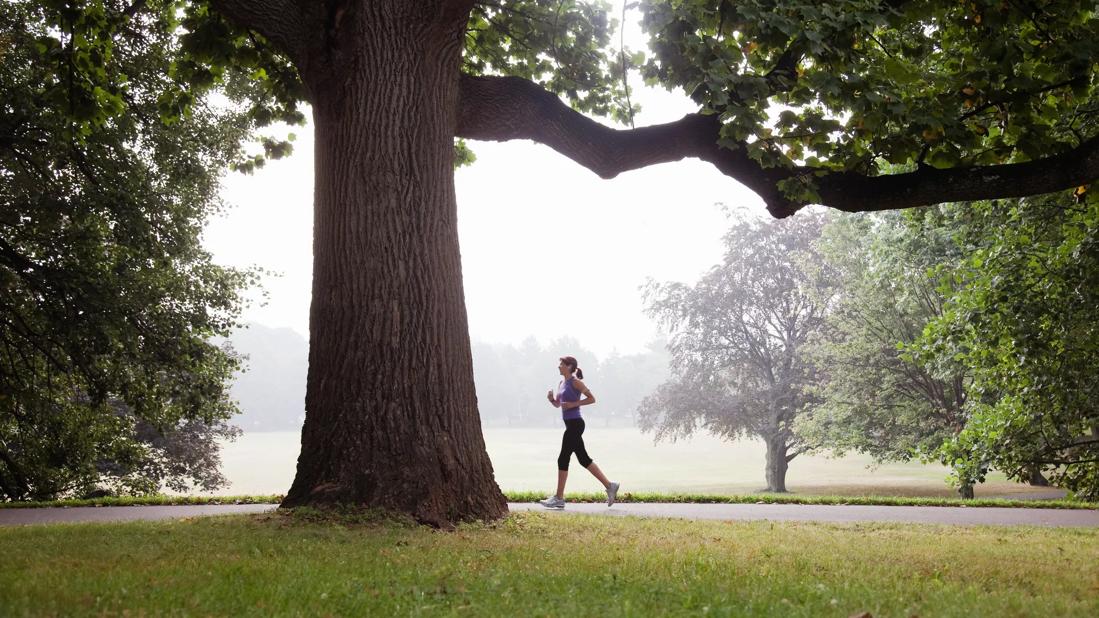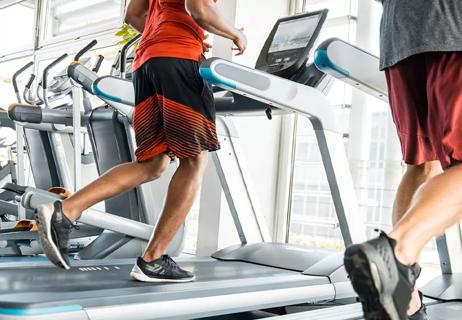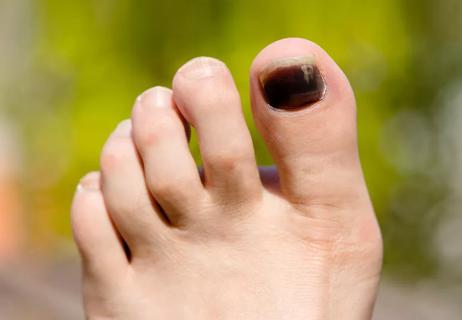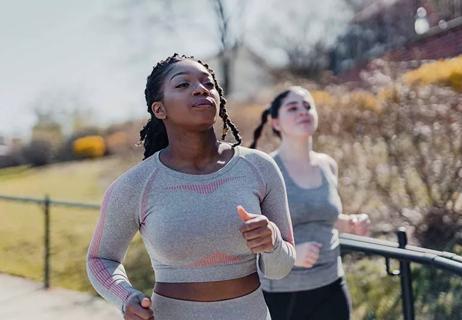Reducing your pace allows you to log more miles and train your body for the stress of running

If you’re a runner, there’s a good chance you might be training for an upcoming race or just looking to increase how quickly you can cruise around your neighborhood during a run.
Advertisement
Cleveland Clinic is a non-profit academic medical center. Advertising on our site helps support our mission. We do not endorse non-Cleveland Clinic products or services. Policy
Your need for speed probably includes tracking your stats (What is your RPE? What should your weekly mileage be?) and thinking about all the different ways to be faster (Are your shoes lightweight? Should you add sprints into your routine?).
And while there are several methods and strategies when it comes to running, have you considered running slower?
Similar to how it feels to jog, the idea behind “slow running” (also known as low-intensity running) is that by slowing your pace, you can log more run miles and train your body in a variety of ways, such as building your endurance, strengthening your muscles, heart and lungs.
Overall, you’re allowing your body to adapt to the stress of running and prevent injuries, which will help accomplish your goal of running faster later.
“There’s a lot of evidence to show the incredible aerobic changes we can have with slow running,” says cardiologist Tamanna Singh, MD.
Dr. Singh, a runner herself, shares the benefits of slow running and gives us some tips on how to slow run.
“The best way to identify slow running is to equate it to a subjective sensation of a jog. A jog is a perfect way to visualize a run where you’re very easily carrying a conversation. There’s no huffing and puffing between two or three words. If you wanted to sing to a song you’re listening to while you’re running, you could,” says Dr. Singh. “It’s an effort that you could sustain essentially forever.”
Advertisement
What slow running means in terms of speed and pace is different for each runner.
“For example, for someone who typically runs an 18- to 20-minute 5K, their slow pace is going to still be a little faster than someone who perhaps runs at a 25- to 30-minute 5K pace,” she adds.
When you finish your slow run, you may even feel like you can keep going instead of feeling tired and out of breath like you would on a normal run. Your slow run should feel comfortable and not too challenging.
The idea isn’t to completely stop pushing yourself on runs. It’s more about being strategic with your training. You want to have a good mix of intensity — most runs should be slow, while other runs should be where you push yourself to run fast.
A good rule of thumb? About 80% of your runs should be slow running and the other 20% should be faster.
“It depends on what you’re training for, your running experience and your injury experiences,” clarifies Dr. Singh.
And if you’re someone who tracks their heart rate zones, Dr. Singh says that you want to stay in zone two for the majority of your run.
“Zone two running is basically usually around 55% to 65% of your max predicted heart rate.”
Not sold on the idea that slow running will help you train for that upcoming race or to just increase how fast you run?
Slow running benefits include:
Sure, you might be able to run a nine-minute mile right now, but can you keep that pace up for five miles or 10 miles?
By incorporating slow running into your routine, you can improve your stamina and resistance to fatigue.
And that’s thanks to improving your mitochondria function. Mitochondria can be found in almost every cell in your body and produces 90% of your body’s energy. Mitochondria process oxygen and convert food into energy.
“We can increase mitochondrial density by running slowly, running aerobically,” explains Dr. Singh. “We can also develop capillary beds or beds of little blood vessels, which then help us increase the amount of oxygen delivery to your muscles. By improving oxygen delivery or essentially increasing the energy that you can deliver, you’re able to increase the time between the start of your run and the timing of fatigue.”
While slow running helps with your endurance, it also helps retrain your muscle fibers. If you run longer distances, your body needs to be able to sustain that effort. By strengthening your muscles through slow running, you’ll be able to maintain a faster pace for a longer time.
Advertisement
For example, say your slow runs are around a 10-minute mile pace. During those runs, you can easily sing your favorite song.
“Building the endurance and the cardiac efficiency is what helps you then start to slowly get a little faster on your slow runs,” says Dr. Singh. “What you’ll notice over time — and it’s not over a couple of days or a couple of weeks, but over the course of a couple of months or up to a year — you’ll notice that your slow pace is faster than the prior 10 minutes per mile.”
And the idea is that by incorporating slow running into your training, you’re less likely to sustain injuries.
“If you watch people sprinting compared to someone who’s jogging, you can visibly see the change and the difference in impact of the foot to the ground,” she continues. “The amount of power you need in your legs and the force of impact is going to be far greater if you’re sprinting or running fast versus if you’re running slow.”
Over time, that wear and tear on your body can take a toll.
“The demands on the body are much higher, the risk of injury is much higher the faster you go,” notes Dr. Singh. “Slow running will help you stay healthy for longer. There’s a place for fast efforts and a place for learning how to run fast and how to train your muscles to run fast. But there’s space for keeping miles easy to protect yourself from injury.”
Advertisement
“The first thing you need to do is throw your ego out the window. That’s the hard part,” relates Dr. Singh. “It’s going to freak you out how slow you’re going. One way to think about it is don’t even think about it as slow running. Tell yourself the purpose of this run is to increase your mitochondrial density, the purpose of this run is to improve your efficiency, the purpose of this run is to improve and enhance the ability for you to deliver oxygen to your legs when you’re running.”
Here are some other slow running tips:
Advertisement
Looking for a personal testimony on how slow running can change your run game? Look no further than Dr. Singh.
“I have become much faster after incorporating slow running to the point where one of my buddies who I run with, who perhaps doesn’t really subscribe to the slow running idea, has said they can’t believe how much I’ve improved my run time,” she shares.
So, consider slow running and how it can play a part in your running routine and strategy.
“If you want to become a faster runner, remember that Rome wasn’t built in a day and your goal pace isn’t going to be built in a day,” says Dr. Singh. “But the time you spend in optimizing your body and the biological mechanics within your body are really going to help you in the long run.”
Learn more about our editorial process.
Advertisement

Using precautions like bandages and lubricants can help you run away from this uncomfortable condition

Running doesn’t cause knee arthritis, but you can take steps to minimize cartilage damage

Months of preparation go into readying your body to run 26.2 miles

A few precautions can keep your toenails from turning black and falling off

Your body’s natural response to starting workouts may include an urge to scratch

What you should know before hitting a race before the big Thanksgiving meal

As a training tool, ditching your shoes could help you build better running form to avoid injury

These adjustments can help you maximize your workouts when the temperature rises

Start having sex about 72 hours before ovulation, then at least every other day during your fertile window

Attachment theory suggests that your earliest relationships shape connections throughout your life

It isn’t a recognized mental health disorder, but research shows that problematic social media use can negatively affect your mental health, self-esteem and sleep